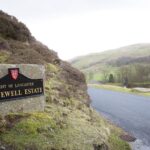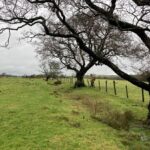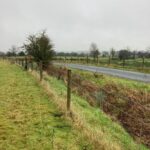Whitewell Hedge Restoration Project
Following the biodiversity audit of our rural estates carried out in partnership with Natural England and the Game & Wildlife Conservation Trust (GWCT), the rural team has been looking at ways of improving and enhancing our hedgerow habitats.
Last year the team audited all of the hedgerows across our Whitewell Estate in Lancashire. This showed that, while a number of hedges had been restored by tenants and new planting had been completed, there was still a number of gaps in evidence. As part of our commitment to improving the sustainability of our estates, we were keen to fill in these gaps in order to increase the range of natural habitats and breadth of biodiversity across the estate.
Working with the Area of Outstanding Natural Beauty (AONB) team responsible for administering the Farming in Protected Landscapes (FiPL) scheme in the Forest of Bowland, we set up the Whitewell Hedge Restoration Project. The aim was to restore our hedgerows through the ‘gapping up’ of existing hedges, while also enhancing the natural landscape of the estates with the planting of new hedgerows where appropriate.
Having mapped the areas we considered to be most in need of attention, the team then shared the detail with our Whitewell farming tenants, inviting them to put forward any additional hedgerows which they would like to see included. This resulted in a further three hedgerows being added to the project scope and over the Christmas period, our tenants helped to prepare the ground, cutting back branches and clearing access routes in anticipation of the project start in January.
Groundworks have now begun and our fencing contractors are on site, installing the five kilometres of fencing required. Our external forestry consultants, Forwoods Ltd, are leading on the planting side with reforestation specialists Tomorrow’s Forest and planting is scheduled to start next month. The mix of hedgerows selected is as follows: hawthorn (60%), hazel (17%), holly (8%), dog rose (6%), crab apple (4%), honeysuckle (4%) and guelder rose (1%).
In line with the Duchy’s broader sustainability aims, the team is also trialling biodegradable tree shelters made with a wool-based polymer as part of the project. The shelters have an estimated life of five years before they start to naturally break down.


